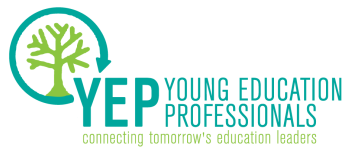Congress should care more about what teachers think, particularly when crafting such teacher-centered legislation.
For example, I don’t know many any teachers that are fond of standardized tests. However, here we are, 14 years into No Child Left Behind, and we have one of the most difficult and stringent tests yet—the PARCC tests. And while PARCC was not created by nor is mandated by Congress, the results from these tests could potentially be used for a lot of things that won’t please educators — including job evaluations, school ratings, and to secure government funding for education.
However, if I could weigh in on the ESEA reauthorization, here’s what I would say:
 Credit: beejalparmar.com
Credit: beejalparmar.com Teachers, students, and parents have expressed their views that standardized testing does not work for measuring educational quality. There are so many variables that affect a student’s performance on any given day, particularly in low-income communities, where students face greater outside pressures. We need to find other ways of evaluation that don't involve such high-stress measures.
Students should be taught how to learn, how to think, and how to create (not how to take a test).
Some of the best school systems in the world, such as Finland, have curricula that include much more than your basic arithmetic, science, and reading. They have classes in music, art, sports, religion, and even textile handcrafts. It is widely known that many American schools, particularly those in impoverished areas, have cut a lot of their extracurricular activities because of funding issues. Oftentimes these subjects are the ones that get at the essence of learning and encourage curiosity and inquisitiveness. In order for students to be ready for the work world—and more importantly, life—they need to learn how to think critically and solve problems. Academic study alone cannot provide these lessons.
Make school funding truly equitable.
A huge mistake that No Child Left Behind made was not providing any additional resources to struggling schools. This move is counterintuitive—schools that aren’t performing well need more funds than schools that are doing better in order to make improvements to their schools and provide additional supports for kids. This move would make funding equitable. And while NCLB does provide additional money for high-poverty schools through its Title I Funding, those funds are often not enough because typically states and districts give less money to the schools serving the students who need it the most. In other words, Title I money cannot create school finance equity unless all schools have at least the same amount of funding. Congress must do more to make sure that states and districts hold up their end of the bargain and provide disadvantaged students with at least the same, if not more resources than their peers.
Case in point: I teach in one of the bottom 40 performing schools in the District. My school is also severely outdated. Only two of our eight classrooms have smart boards; we have one computer lab; and each classroom has about two computers (many of which don’t work). Our bathrooms were out of paper towels for an entire week during the month of April. Our school was built in 1974 and has not been updated. However, another school in the district, Janney Elementary—one of the top 10 performing schools—got a new addition (complete with new rooms for the arts, sciences, and multipurpose use) in July 2014. (It is important to note that Janney is located in a much wealthier neighborhood and receives significant funding from its community.) Currently, District of Columbia Public Schools has 26 school projects in the works, but only five are part of the bottom 40 (and some schools in the bottom 40 have been updated in the past). Although NCLB aimed to make education more equal, this provision only served to continue to marginalize our struggling students.
Although well-meaning, a lot of the legislation surrounding education has yet to really improve things. To many, it’s only made things a lot worse. I think for any real change to happen, Congress needs to do what it’s supposed to: listen to the teachers.
Amara Pinnock is an elementary school teacher in DC. Reach her via email or Twitter.

 RSS Feed
RSS Feed